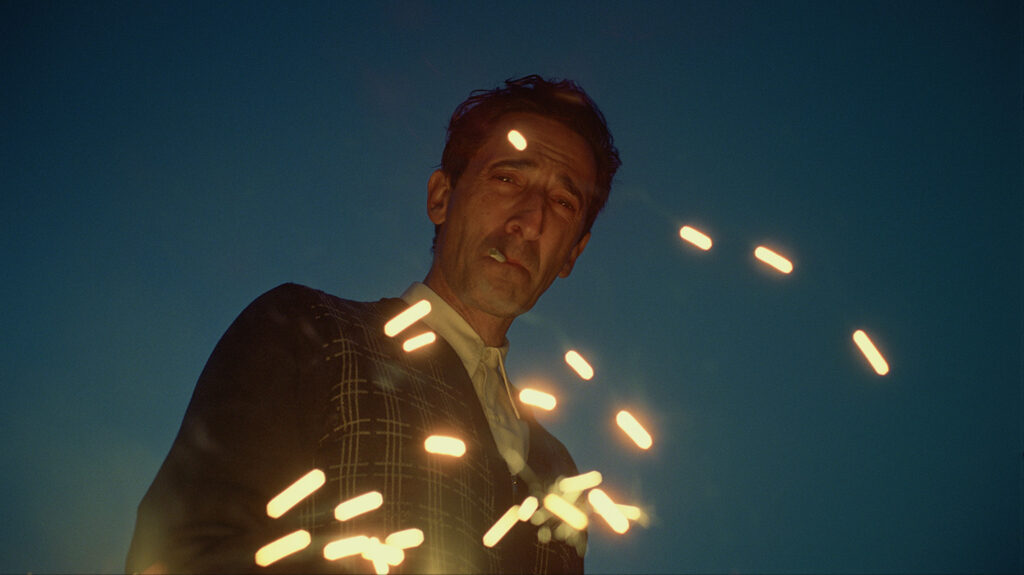Flight Deck — Product White Paper
Advanced system-to-system automation for complex networks and workflows

Flight Deck unites the feature-rich functionality of Manager+Agents and the powerful cloud I/O capabilities of Signiant Flight — which together form the core transport backbone for most of the world’s largest media companies. Flight Deck’s cloud-connected features, including visibility from the same Signiant console used by Media Shuttle and Jet, bring the gold standard in advanced automated file movement into the SaaS era.
Signiant Flight Deck is powerful, secure enterprise software that connects internal locations and external partners to automatically transfer large files and data sets between geographically distributed endpoints. Flight Deck’s workflows help move content from system to system within an organization and its global media supply chain, and can be extended to support person-initiated transfers. By providing central control, visibility and tracking of all content deliveries, Flight Deck serves as a hub for file-based workflows that span the globe.
Flight Deck is designed to move content over any public or private IP network, and connect to a range of on-premises and cloud-based storage types. Flight Deck transfer endpoints (known as Agents) are distributed throughout an organization’s ecosystem, with a centralized Manager orchestrating file movement between the Agents. Transfers between Agents take advantage of Signiant’s patented acceleration technology, which minimizes the impact of latency and congestion to ensure fast, reliable data transmission, regardless of distance.
The software’s architecture can support thousands of endpoints from a central control point, offering the lowest TCO at scale of any solution in its class. In contrast to competing systems where an administrator needs to touch each endpoint for individual configuration, Flight Deck’s policy-based architecture allows configuration settings to be automatically propagated to an unlimited number of endpoints — a key differentiator for large-scale global deployments.
With Flight Deck, administrators have granular control of file transfers. Daily content flow can be monitored via a configurable dashboard that offers status indicators and alarms. With broad operating system support, modules for workflow automation and network resource management, and a native REST API for integration with other applications, no file transfer solution is more flexible, powerful or reliable. In addition to the central role Signiant software plays in the media and entertainment sector, helping studios, broadcasters, cable networks and sports organizations move petabytes of data every day, Flight Deck is perfectly suited to any industry where there is a requirement for moving large data sets around the world.
Signiant SDCX SaaS Portfolio
With the introduction of Flight Deck, the Signiant SaaS portfolio now includes three solutions, each of which addresses a different class of mission-critical file transfer use cases. Access to each one is supplied through an annual SaaS subscription. Organizations with multiple subscriptions and large cloud deployments can scale up with a unified cloud payload purchase.
Flight Deck, Media Shuttle and Jet can all be used with on-premises and cloud storage endpoints.
With Flight Deck, a Manager is connected to the same cloud control plane used by Media Shuttle and Jet, and Manager system data can flow to a Signiant-managed cloud environment for monitoring, storage and processing purposes. On top of the new Flight Deck functionality, this architecture lays the groundwork for a single cross-product web interface known as the Signiant Console.
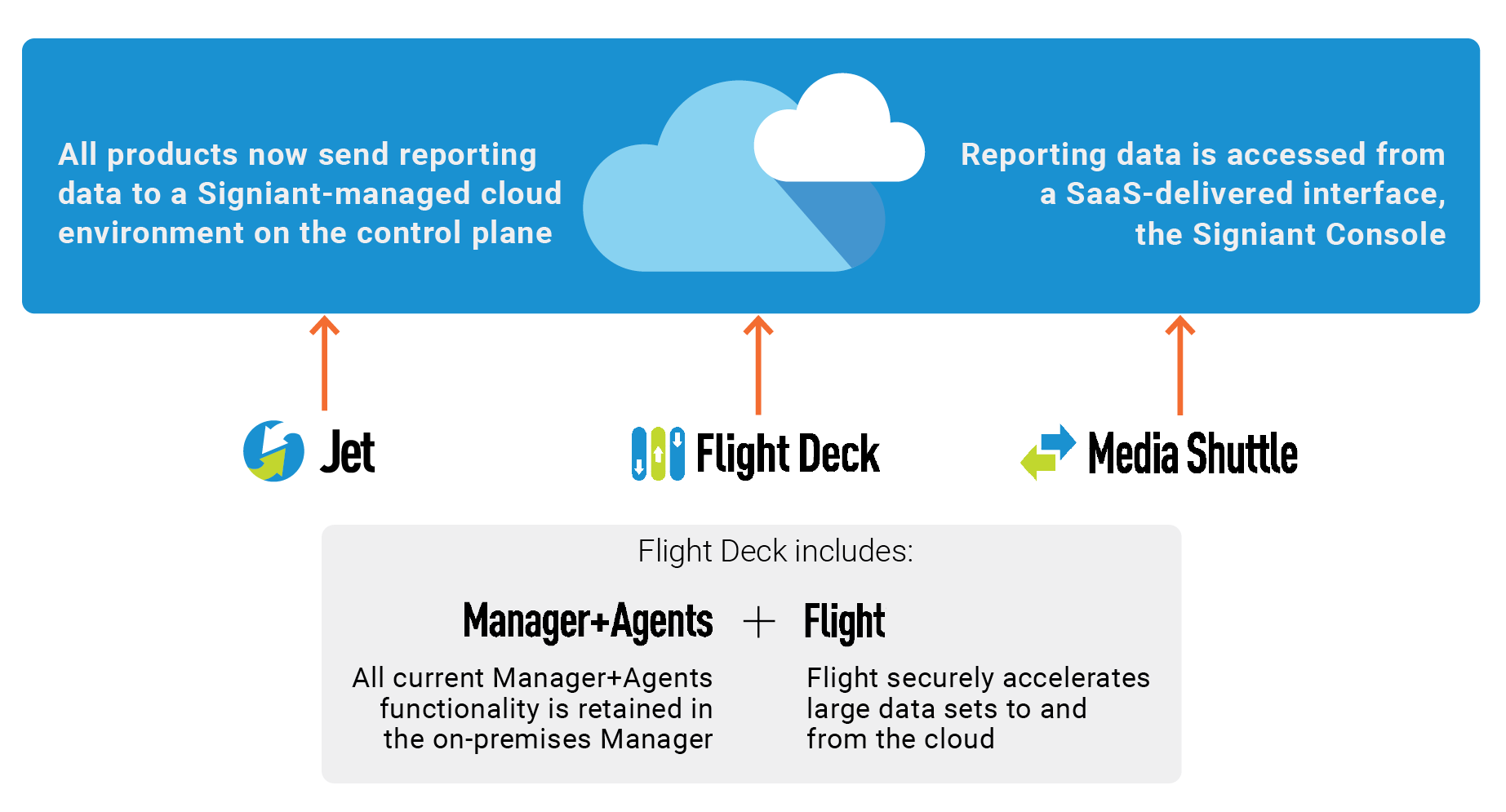
Flight Deck’s Hybrid SaaS Architecture
Flight Deck’s hybrid SaaS architecture adds a cloud control plane layer to an on-premises deployment of Manager+Agents.
A Manager system installed in an organization’s enterprise network orchestrates all transfers to and from Agents that are connected to on-premises storage, or to cloud storage via Flight. Administrators use the Manager interface to configure the system and set up jobs.
Via the cloud connection, the Manager can also send system data to Signiant’s multi-tenant cloud control plane. Only the Manager is connected to the control plane and individual Agents do not need to be connected to the Internet.
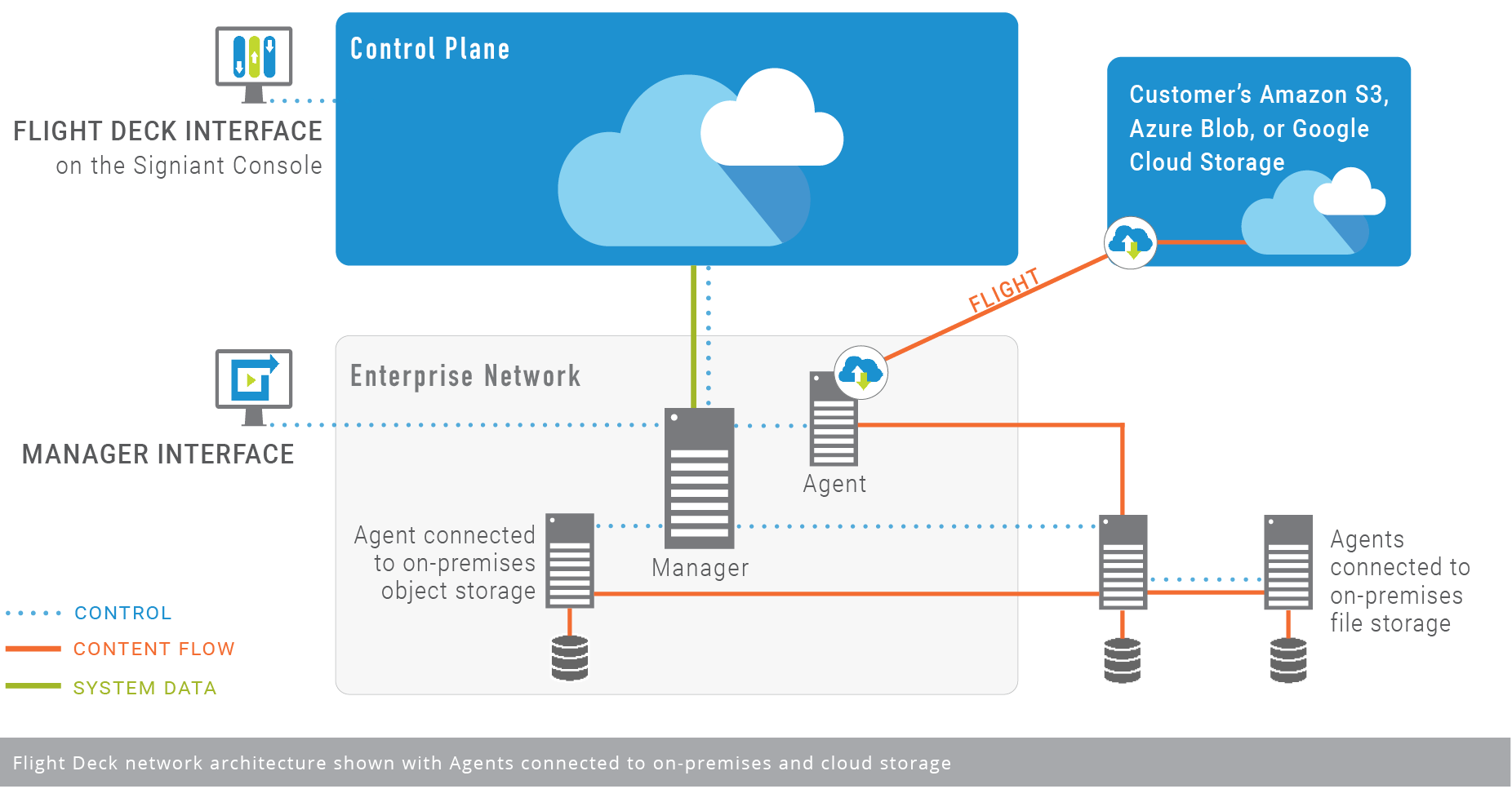
System Components
A Flight Deck deployment comprises these elements:
- Manager: Manager software is installed on a server within a company’s internal network. The Manager performs all administration, control and reporting functions and orchestrates transfers. Users configure the system, schedule transfers, and monitor activity via the Manager’s user interface, which can be accessed from anywhere in the world.
- Agents: Every endpoint in a Flight Deck deployment requires Agent software running on a server near the target or source storage, running either as a single node or in a load-balanced group for enhanced availability and throughput. Agents execute the tasks that the Manager defines — primarily accelerated file movement and interoperability with third-party software and systems.
- Relay Agents: Relay Agents can be configured to transfer content between public and private networks, traversing firewalls while maintaining network security. The functional difference between a Relay Agent and a Transfer Agent is that a Relay Agent cannot be used as a transfer endpoint, whereas a Transfer Agent can be used as a relay point.
- Cloud Connection: The Manager’s connection to the cloud-native control plane of Signiant’s SDCX platform provides robust SaaS features, such as a Manager backup to cloud storage, enhanced visibility into job history data and software usage, and an integrated environment for the administration of Signiant solutions.
- Signiant Flight: Signiant’s Flight service provides secure, accelerated movement of large data sets to and from the cloud. Flight offers unattended cloud transfers and enables workflows that encompass multiple storage types and locations. Flight works with all three major public cloud platforms (Amazon, Azure, Google).
- Manager and Signiant Console Interfaces: Flight Deck features can be accessed via two user interfaces: The Manager interface offers visibility into file movement, plus granular control of configuration, task automation, scheduling, and reporting. Flight Deck SaaS capabilities, including Manager cloud backup and extended visibility into job activity, are available through the Signiant Console, the single cross-product web interface for all Signiant SaaS solutions.
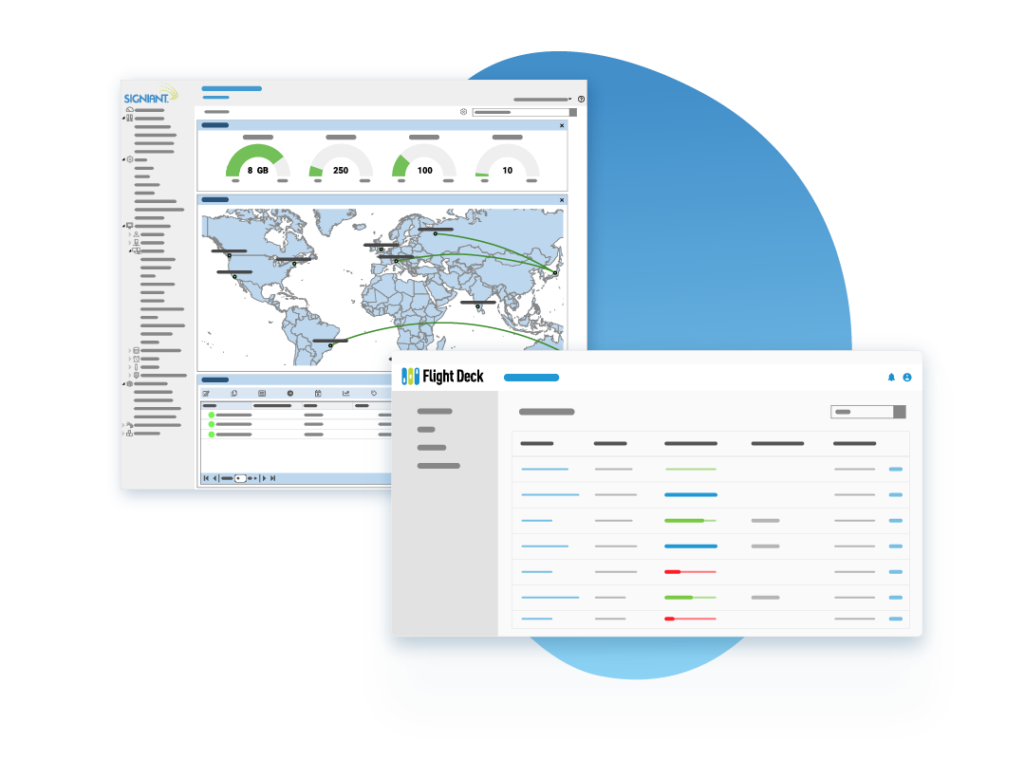
Storage Flexibility
In response to the proliferation of storage options on the market, Flight Deck accommodates storage types that extend beyond traditional on-premises files systems. Flight Deck supports on-premises object storage, with thorough testing of S3-compatible offerings from EMC, NetApp, CleverSafe, and other major storage suppliers.
Flight Deck workflows can also include transfers to and from cloud storage in Amazon AWS, Microsoft Azure, and Google Cloud Storage. These accelerated transfers are achieved via a Signiant SaaS offering known as Flight. On the cloud side of a transfer, there is no need for the customer to procure compute resources or deploy Flight software — Signiant handles all of that on an auto-scaling basis. On the on-premises side, an additional piece of Flight software is installed alongside the Agent. All transfers can be monitored via the Manager interface.
Signiant Acceleration Technology
Flight Deck leverages Signiant’s proprietary acceleration technology, moving content up to 100x faster than standard Internet transmission speeds. Signiant software is capable of moving any size file or data set over any IP network, while taking advantage of all available bandwidth.
While our transport technology adds value in many situations, the speed difference is most notable with large data sets, long distances or highly-congested networks and, somewhat counter-intuitively, when there is more bandwidth.
- Signiant’s transport technology eliminates the impact of latency and packet loss
- The entire file is always sent byte-for-byte, without compression
- Signiant adds Checkpoint Restart on top of its transport technology to automatically restart any interrupted transfer from the point of failure, without losing data
Signiant UDP
Signiant’s patented acceleration technology is often casually (and somewhat incorrectly) referred to as “UDP acceleration”, and it does run over UDP. But Signiant’s innovation goes far beyond that passing resemblance to deliver high speed over UDP with TCP-like reliability. To make UDP more dependable, Signiant implements TCP functionality in a far more performant way by optimizing:
- Flow control — makes sure data is transmitted at the optimal rate for the receiver
- Congestion control — detects when the network is being overloaded and adapts accordingly
- Reliability mechanisms — ensures that data loss due to congestion or other network factors is compensated for and that the order of the stream of data is maintained
Using constant measurements of effective throughput, network latency and packet loss, Signiant’s technology catalogues and analyzes the frequency of changes to locate points of network congestion. This approach affords far more efficiency than congestion control algorithms that react to simple point-in-time packet loss.
Checkpoint Restart
Over and above the various protocol-level reliability mechanisms, Signiant’s Checkpoint Restart feature adds a layer of fault tolerance to any transfer. If data movement is interrupted for any reason — from network failure to application or operating system crashes — the transmission automatically restarts from the point of interruption, without data loss. Checkpoint Restart ensures a reliable, efficient transfer process by avoiding the need to start over at the beginning after a failure.
Signiant Acceleration Compared to TCP
Signiant acceleration technology has the greatest impact for large file transfers over distance and takes full advantage of available bandwidth. Compared to TCP, as distance and latency increases, Signiant performs exponentially faster, especially with higher bandwidth connections.
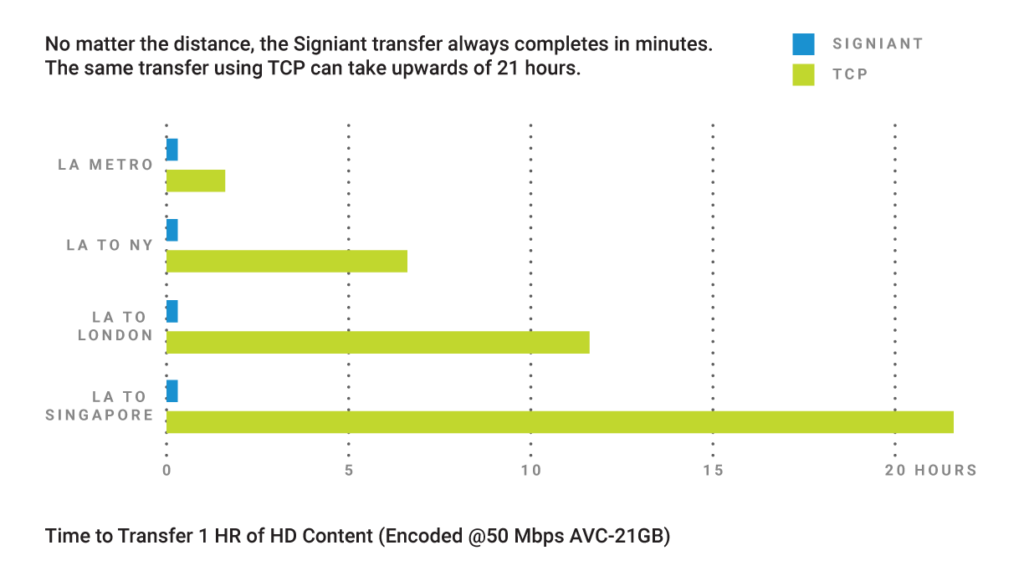
Security
Security is not an afterthought for Signiant. Signiant’s multi-layered approach to security encompasses both policy and technology strategies that are guided by a set of secure design principles. To test our established security protocols and encourage continual improvement, Signiant engages independent third parties on an ongoing basis to perform thorough security reviews of its products and services.
Signiant Console Authentication
The Signiant Console is the control-plane entry point for all Flight Deck subscribers. A username and password are used to authenticate to the console. Future iterations will include SAML, Multi-factor Authentication, and LDAP (Active Directory) integrations.
Manager Backup Data Encryption
All Manager backup data is encrypted with a mandatory password set by the user when they create a backup job that sends data to Flight Deck.
Storage Independence & Control
Customers retain ownership and control of content storage, whether on-premises within the customer’s network or public cloud storage tenancy.
Independent Security Audits
We maintain an ongoing relationship with a top-tier, third-party security auditing company. This firm regularly reviews our designs and conducts independent penetration testing to ensure effective protection.
Standards-based Security Technology
At the transport level, Signiant utilizes Transport Layer Security (TLS) to protect assets.
Software-as-a-Service (SaaS) Security
Signiant carefully considers the unique security considerations for SaaS offerings in our technical and operational business practices.
- Our SaaS offerings are hosted on third-party cloud infrastructure that is MPAA site security compliant. Signiant was one of the first 20 companies to receive DPP’s ‘Committed to Security’ certifications and continues to evaluate its software and certify annually under the DPP ‘Committed to Security’ program.
- With a SaaS offering, the software supplier intrinsically has access to more data about utilization than was possible with on-premises software. We have implemented organizational data access controls.
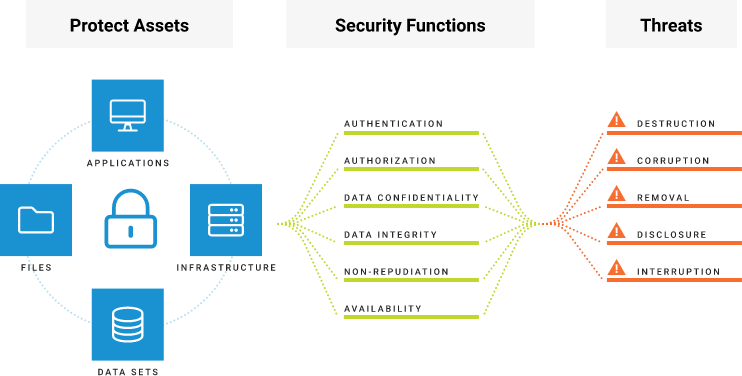
Secure Design Principles
Signiant engineers are trained to take security into account right from the start, ensuring that we employ industry-standard technology to provide optimal protection. Our security model comprises many dimensions:
- Authentication: Ensuring that users are who they say they are
- Authorization: Requiring users to have pre-approved access by operational managers
- Data confidentiality: Protecting data from unauthorized access
- Data integrity: Ensuring that data cannot be corrupted
- Non-repudiation: Making sure that a user cannot deny having taken an action
- Availability: Preventing interruptions to access=
Privacy
Signiant is committed to supporting its customers’ privacy. Flight Deck offers the choice to opt into the collection of certain types of data. Signiant also reviews its privacy policies and procedures on a regular basis to ensure compliance with regulatory frameworks.
Limitations on Data Collection
Opt-in Data Collection
Flight Deck administrators can elect to keep Manager backup data in Flight Deck. Signiant protects all data collected on our SaaS platform.
Opt-in Filename Logging
Filenames are only retained by Signiant’s SaaS platform when a Flight Deck administrator enables filename logging in both the Flight Deck and Manager interfaces.
Full GDPR Compliance
The European Union’s General Data Protection Regulation (GDPR) protects the data privacy rights of EU citizens. Signiant understands the criticality of this law to our customers and continually reviews our processes and policies to ensure compliance with this regulation.
Signiant Privacy Policy
For more information, please see the Privacy Policy to understand how Signiant collects and uses personal information provided on our service platform. The policy also describes the choices available to individuals regarding use of personal information and how this information can be accessed and updated.
Automated File Transfer Basics
Creating Jobs
In Flight Deck, scheduled content transfers between Agents are referred to as jobs. The most straightforward way to create a job is to use one of the standard Media Mover job templates included with Flight Deck.
Media Mover offers four job templates that align with common use cases:
- Media Dropbox transfers data from one folder on a source Agent to one or more destination Agents, based on a time of day or changes to the source directory.
- Media Aggregator collects files from multiple source Agents to a single destination Agent and stores the files on its local disk or attached storage.
- Media Distributor is used for push distribution from one or more folders on a single source Agent to one or more destination Agents.
- Media Replicator transfers a large number of files from one folder on a source Agent to multiple destination Agents. Intended for use when files are not changing or growing in size during a transfer.
Object Mover job templates can be used to move files into and out of object storage:
- Object Dropbox transfers files from a single hot folder on a source Agent to local or cloud object storage, based on a time of day or changes to the source folder.
- Object Uploader moves multiple files and/or folders from one Agent to local or cloud object storage.
- Object Downloader transfers multiple files and/ or folders from local or cloud object storage to a destination folder on an Agent.
- Object Replicator distributes files or folders from one object storage location to one or more other object storage locations on the system or between systems.
Object Mover works in conjunction with Flight for transfers to and from cloud object storage.
Flight Deck administrators can also create custom job templates using the Automation Engine.
Agent Groups
An Agent group is a logical collection of Agents that jobs can use in place of individual Agents. When a Job uses an Agent group, the controlling Agent sends data to or receives data from each Agent in the group. This facilitates sending files to/from multiple locations, and provides optional redundancy and scalability across pools of Agents. In load balancing mode, transfers are automatically routed to balance the load across all active Agents in a group.
Inter-company
Transfers Most large media enterprises have an extensive network of partners and use the technology behind Flight Deck to move content across a complex global supply chain. Flight Deck is specifically designed to provide secure mechanisms for accelerated transport between companies, in addition to supporting transfers within a single company.
This is accomplished via mechanisms for peering into two or more Manager deployments to create “web of trust” relationships between Signiant installations. Companies can easily establish mutual authentication between multiple Managers and their Agents. In addition, job components running on an Agent can be viewed and controlled from Managers other than the initiating Manager.
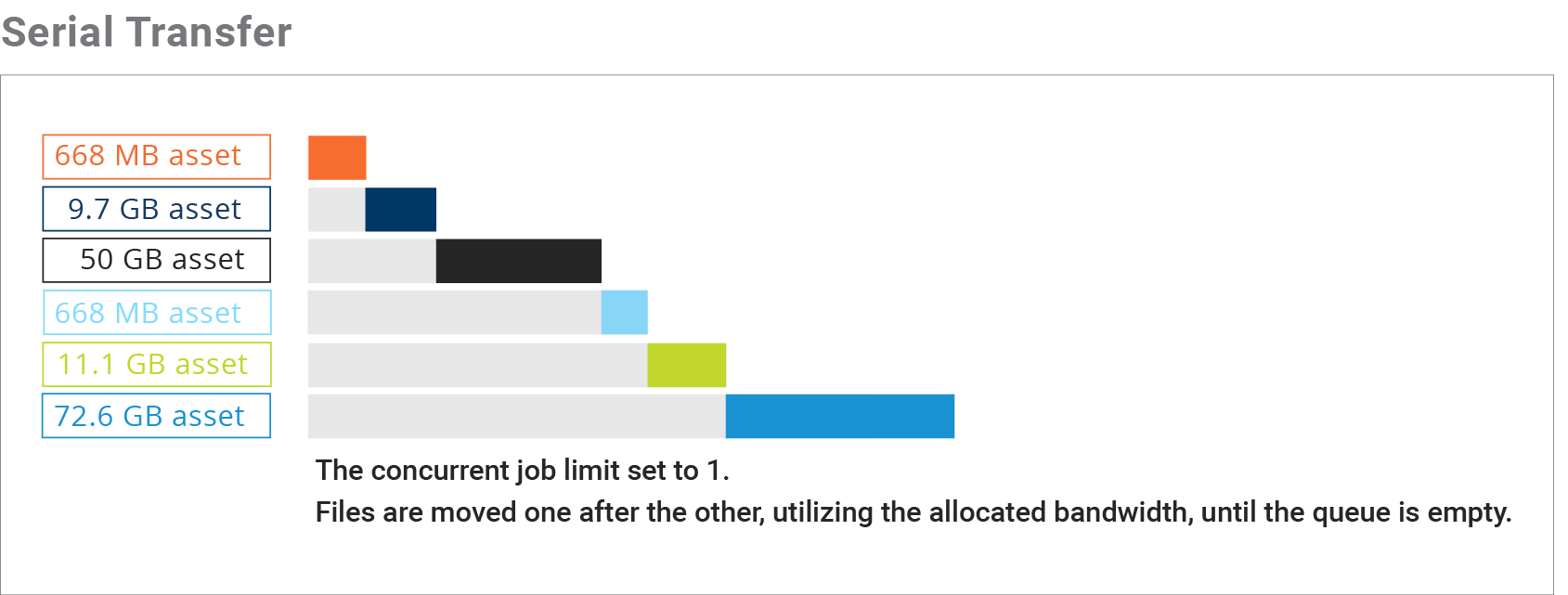
Growing File Support
Flight Deck provides support for growing files, which is the ability to begin sending files as soon as the file starts to be written rather than waiting for the file write to complete. This option enables highly efficient workflows for sports, news and other types of live event production.
Resource Management
Flight Deck’s resource management capabilities are ideal for organizations seeking sophisticated control of file-based assets, network bandwidth and server resources. Resource management allows administrators to prioritize delivery of assets between sites based on business needs and content delivery windows. As content priorities change, the queue can be adjusted by moving more critical jobs to the top, while jobs with less stringent timelines remain lower in the queue.
Controlled by a single Signiant Manager or multiple Managers, resource management can be used to manage bandwidth usage for specific locations or servers, ensuring systems or networks are not overloaded. Administrators can set automated or manual bandwidth limits for running jobs, and can define serial or parallel transfer flows.
When a job is submitted, a priority and complete-by-time can be specified. Jobs are then automatically ordered by priority and complete-by time.
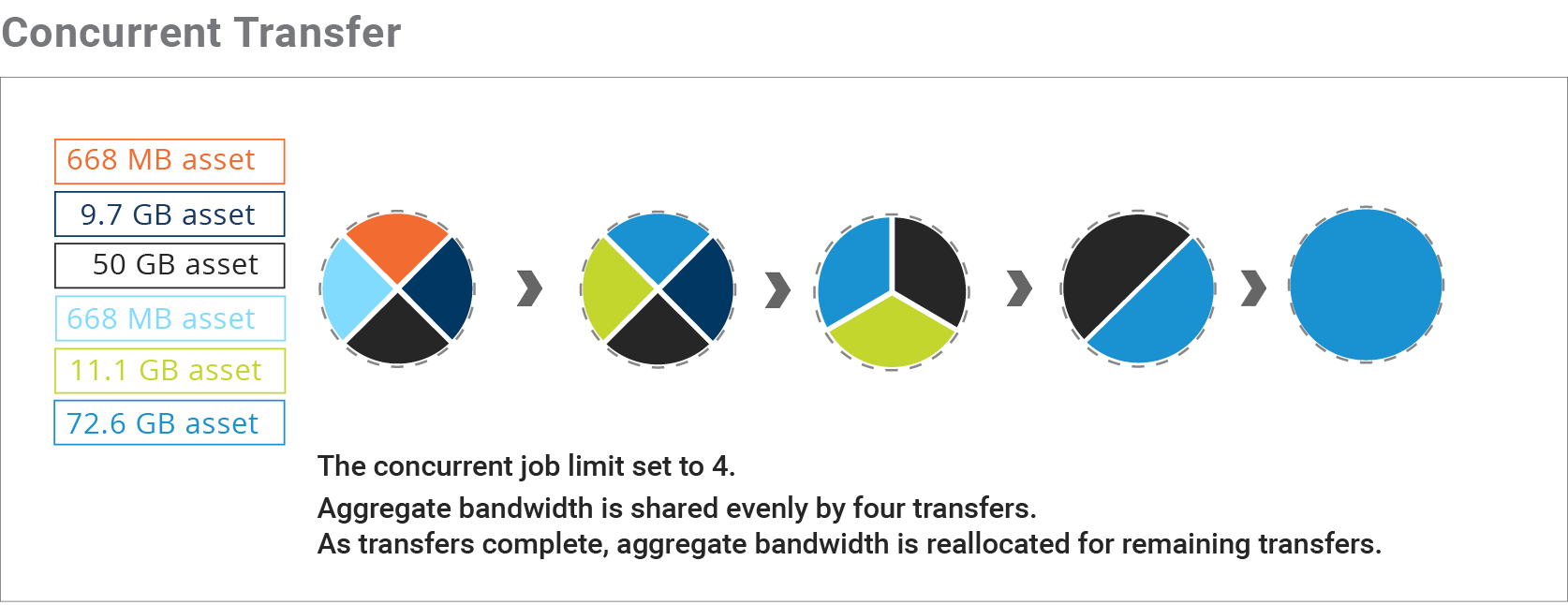
Automation Engine
A Flight Deck’s Automation Engine facilitates the creation of flexible job templates that can be used to create customized workflows for processing content. A template may be as simple as moving a file from one Agent to another, or as sophisticated as directing a package for transcoding and watermarking before publishing.
Whereas the Media Mover and Object Mover functions constitute pre-defined job templates, the Automation Engine allows Flight Deck administrators to create their own custom job templates and components, which can be saved for future use.
The Automation Engine includes a toolbox of standard components, such as transcode or QC steps, that can be linked together via a visual drag-&-drop interface known as the Workflow Canvas to produce new job templates. Custom job templates can be combined with manual tasks and business rules on the Manager system to implement complex file transfer workflows.
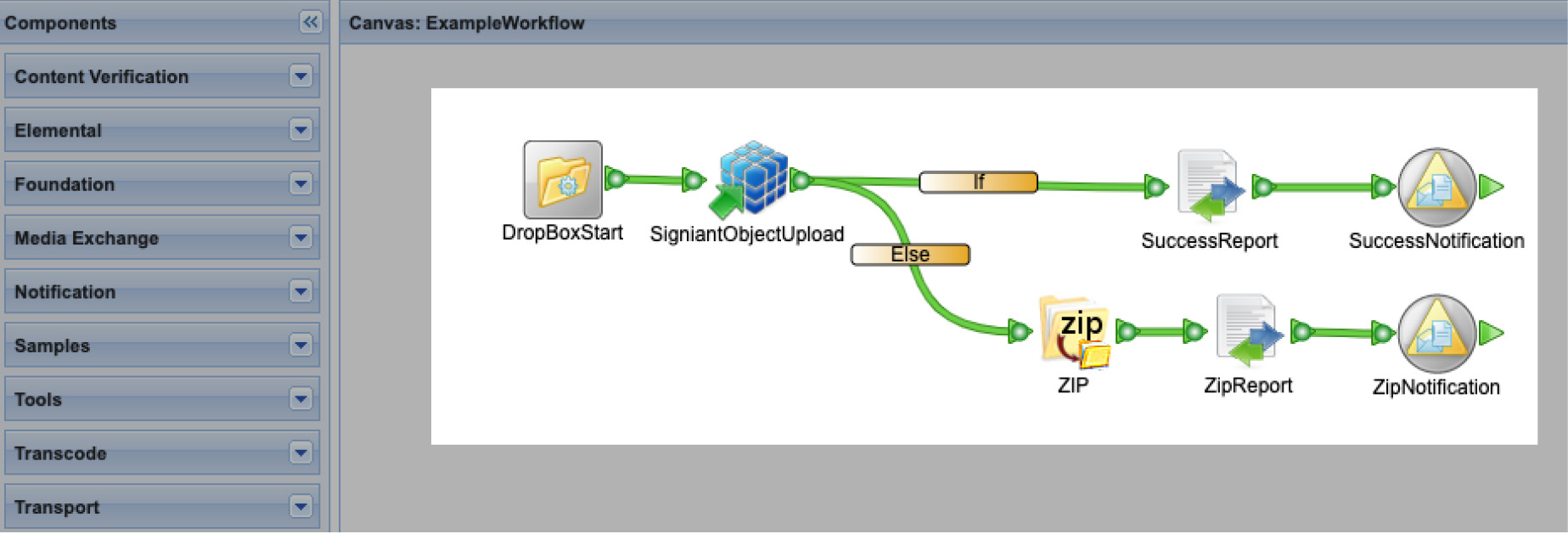
Flight Deck’s Cloud Connection
Connecting Flight Deck’s on-premises Manager component to the cloud-native control plane of Signiant’s SDCX SaaS platform provides advanced SaaS features and a consolidated environment for Signiant administration.
While Flight Deck administrators use the Manager interface to configure and manage most job activity, all SaaS capabilities are accessed via the Flight Deck section of the Signiant Console.
Cloud connection features include:
Cloud Backup
Flight Deck provides a SaaS service to automatically back up a Manager to cloud storage that is provided and maintained by Signiant. This service provides Flight Deck users with redundancy and global access to all the information required for a quick return to full operational capability in the event of a system failure.
Flight Deck administrators can choose to send Manager backups to the cloud instead of, or in addition to, storing them locally.
- Configuring separate Manager+Agents jobs for local and cloud backups allows for increased redundancy.
- Creating one backup job to move all backup data to the secure, unlimited cloud storage provisioned by Signiant reduces reliance on local databases and offloads maintenance tasks associated with the storage of backup data.
Global Access to Manager Backup Data
All Manager cloud backups sent within Flight Deck are instantly and always available in the Signiant Console. Manager restore data includes all software, files, data and programs that allow Flight Deck administrators to manually restore a Manager on a new system. Assuming that the cloud backup job runs on a consistent schedule, the Manager can be restored at a moment’s notice to any chosen point in time, from anywhere.
Extended Visibility Into Job Activity
A Flight Deck subscription provides additional visibility into job activity from a simple web interface. The Signiant Console is the control-plane entry point for Signiant SaaS subscribers. Via the console, customers can manage aspects of all their Signiant SaaS products, including those using Flight Deck, Jet, and Media Shuttle. Authenticated users can access Flight Deck through the Signiant Console at console.signiant.com.
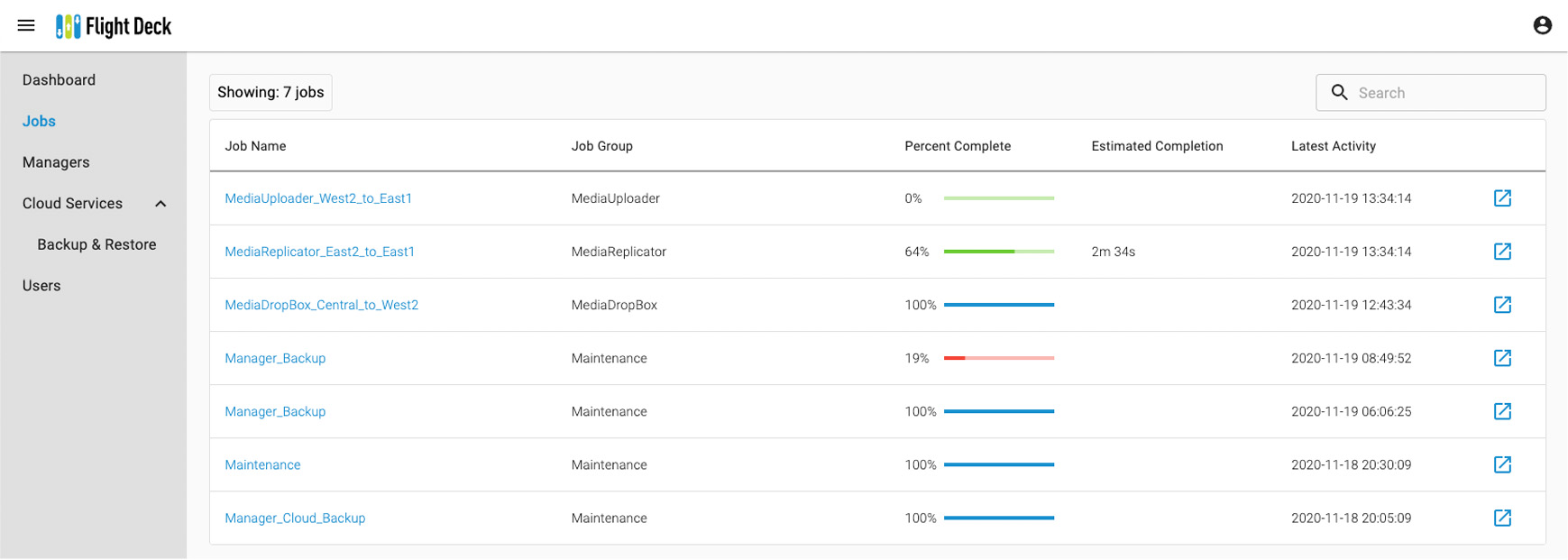
Flight Deck customers can choose to let other people view current and historical transfer activity by inviting them to access Flight Deck on the Signiant Console. In the event of an issue, extending visibility can make troubleshooting easier and more efficient.
Visibility Into Subscription Usage
The Flight Deck usage report on the Signiant Console offers a simple way to keep track of the installation and deployment of Manager and Agent systems and Flight cloud payload.
Flight Deck’s Usage page offers a daily view of subscription data. The report reflects peak usage of Managers, Agents and Peered Agents in relation to the account’s entitlements. The page also displays information about the configuration and usage of AWS, Microsoft Azure and Google Cloud storage.
Long-Term Storage of Reporting Data
With Flight Deck, subscribers can choose to retain Manager reporting data, including system, job, file and performance information, in scalable cloud storage that is provisioned and maintained by Signiant.
- Moving all reporting data to Flight Deck means that organizations can keep all the information they wish to keep, while alleviating concerns that storing an abundance of data locally could overwhelm on-premises databases and halt operations.
- By reducing reliance on the local Manager database, Flight Deck allows for streamlined database management.
Cloud Storage Access With Signiant Flight
Flight Deck includes Signiant Flight, a SaaS offering that provides secure, accelerated movement of large data sets to and from the cloud. Flight works with all three of the major public cloud platforms, Amazon AWS, Microsoft Azure and Google Cloud.
On the cloud side of the transfer, all software and compute resources are provided by Signiant on an auto-scaling basis. The on-premises side of a Flight transfer is handled by Object Mover jobs on the Manager.
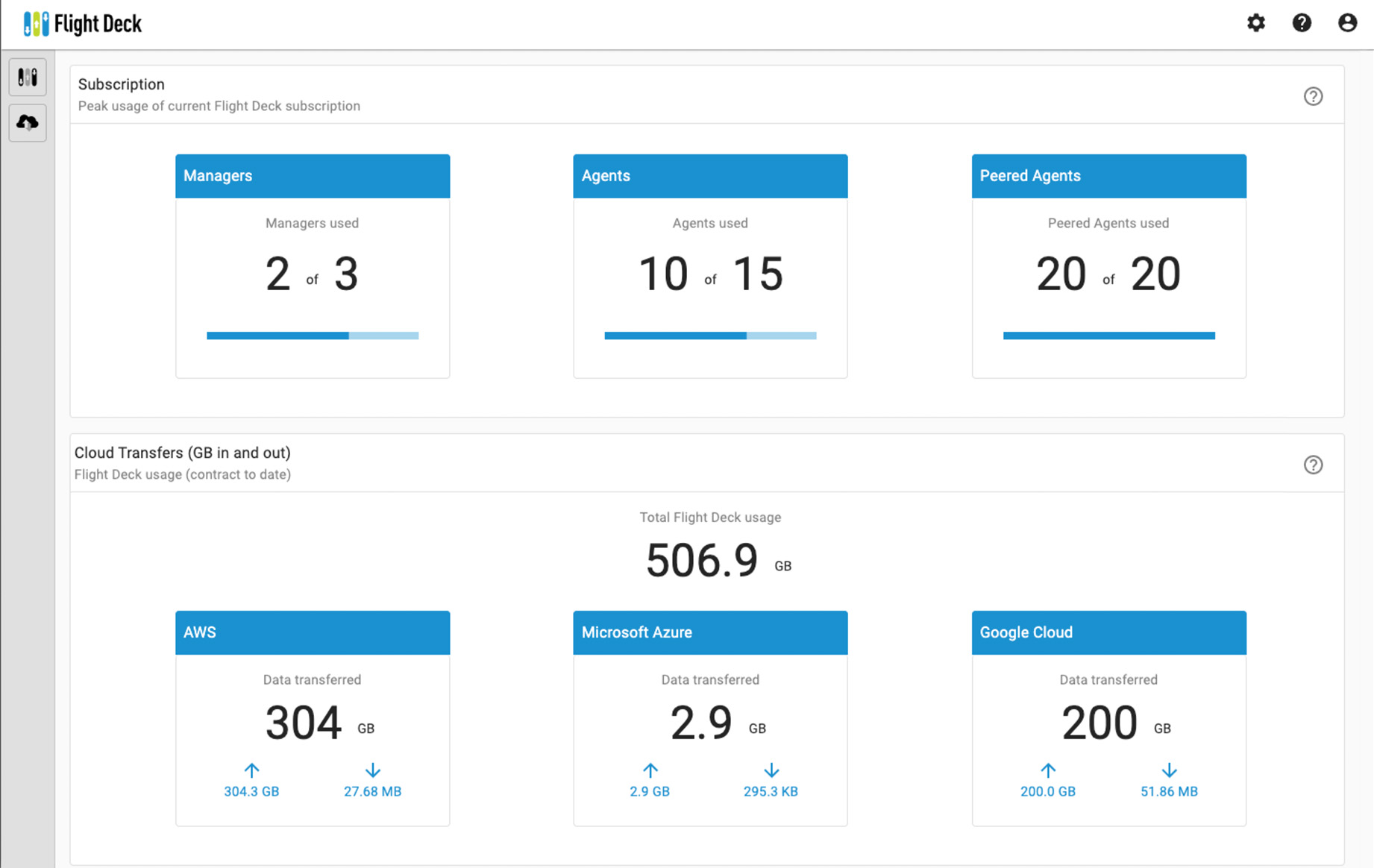
Common Use Cases
Flight Deck is highly configurable and can be used for virtually any task that involves the automated movement of large files and data sets. From a big-picture perspective, however, use cases within the Media & Entertainment sector generally fall within several high-level categories.
This section provides an overview of the most common use cases. It is important to note that all of these examples involve business-to-business media workflows; Signiant technology is not typically involved in delivering content directly to the consumer
Content Distribution
Throughout the global media supply chain, Flight Deck software plays a key role in the B2B distribution of content — both within and between enterprises. There are many situations where there is a mission-critical need for content to flow from a single source location, where it is created or packaged, to various endpoints around the world.
The basic one-to-many workflow of content distribution has long been an essential part of the media business. Prior to the advent of file-based workflows, millions of videotapes and film reels were shipped around the world every day. While there are still situations where it’s practical to ship disk drives or data tapes, B2B distribution is now largely accomplished via terrestrial delivery over IP networks. In parallel with this transition, the scale and complexity of global media supply chains has grown dramatically with the increasingly diverse ways that video content is delivered to consumers. With its highly scalable architecture, the Flight Deck solution can readily accommodate these growing and changing content delivery ecosystems.
These are some of the most common distribution workflows that employ Flight Deck technology to provide acceleration, security and central control:
- Deliver first-run television content to multiple global playout centers
- Transfer Digital Cinema Packages (DCPs) to cinemas for theatrical release of feature films to digital screens
- Deliver video ads to online and/or television outlets
- Send syndicated longform television content to licensees
- Send VOD content to cable system operators
- Transfer promos and other marketing content around the world
- Send source content to languaging houses for localization
- Deliver packaged assets from a media services provider to online platforms
In each of these cases, the content creator/owner will typically have a Manager installation at their headquarters location and perhaps at other sites around the world. Agents will be deployed at major partners or international hubs, and deliveries can be tuned for various situations. In the case of close-to-air television content, for example, it is essential to give priority to certain files and verify receipt by a certain time. In other scenarios, it is best to schedule deliveries during off-hours while the corporate network is underutilized. With Flight Deck, administrators have the flexibility and granular control they need to implement whatever process best meets the needs of the business.
Content Aggregation/ Ingest
Another common workflow in the global media industry involves collecting content from disparate sources and bringing it to a central location for processing, packaging, and subsequent distribution to partners and/or internal facilities. These many-to-one use cases involve some of the same complexities as distribution; they are similarly global in scale and often have time-critical elements.
Contribution and distribution workflows are often interleaved or even interchangeable, with the control point determined by the commercial arrangements between the parties. For example, a major cable network that commissions content from many different producers may design a contribution workflow to ensure timely content submission and a uniform ingest process. The content producer will be provided with (or will purchase) an Agent that is controlled by the cable network’s Manager. In this case, the content producer is a participant in the cable net’s contribution workflow.
That same content-producing entity may also independently create video assets that are marketed and sold to other outlets around the world. Some of those contracts are likely to require that the producer deliver a finished asset to the buyer’s premises. In this situation, the content producer will drive a distribution workflow from their own file transfer system. Because of these diverse needs, Flight Deck deployments within large media enterprises are often correspondingly complex, involving the entity’s own Manager system, Agents from multiple partners, and various cross-trust arrangements. Signiant software is configurable enough to support whatever workflow is desired, the details of which are generally dictated by business model imperatives within the M&E industry.
These are some of the most common aggregation workflows that can employ Flight Deck to provide acceleration, security and central control:
- Collect commissioned programs from global producers (cable or broadcast network)
- Ingest ads from agencies and production companies (ad distribution business)
- Ingest packaged assets from content producers (online platform)
- Gather news content from global bureaus (cable of broadcast network)
Creative Workflows
Signiant software plays a key role in the creative process for most of the produced media assets that consumers see on television, in theaters, or online.
Fast, secure electronic transport of media content between various locations and commercial entities is an essential element of modern production and post production.
The journey from raw camera footage to finished media asset involves many processes, some of which occur in series and some in parallel. Certain activities are talent-driven, undertaken by creative professionals whose artistic sensibilities add crucial value to the finished product. Other processes are purely technical and can be fully automated — while still others lie somewhere in the middle of this spectrum. Flight Deck can underpin all of these processes.
The more premium the asset, the more likely that a large number of different, highly specialized companies will be involved in the creative process. For a high-end feature film, dozens of different specialty post-production firms may provide services ranging from basic editing to digital effects, sound production, and colorizing. Even after the primary asset is finished, hundreds of localized versions are likely created around the world. Localization might include voiceover, subtitles, and/or closed captioning in various languages, along with compliance editing to align with varying laws about what kinds of content can be shown to the public.
A Flight Deck system owned by a creative entity is likely to be operated in a more agile manner than systems owned by large content distributors and aggregators. A film production company might, for example, schedule regular transfers for the duration of a production to send rough-cut footage every night from an on-location system to a production facility. During the day, deliveries for the post-production pipeline will be scheduled on an as-needed basis when the content is ready for the next step. Timelines are usually tight and resources are at a premium, so the granular controls available in Flight Deck can be essential. To meet multiple deadlines with the available bandwidth, the operator may need to use resource controls to prioritize a certain file delivery, followed by two more in parallel.
For high-end productions, security during the creative process is of paramount importance. The creative community depends on Signiant to provide secure transfer, as well as a detailed chain of custody record.
Sports
The cornerstone of sports video is, of course, live action footage from the multiple cameras at the venue. However, a surprising volume of file-based content is generated by broadcasters before, during and after the live event, including highlights, segments, and studio components. For fast-turnaround content during the game, broadcasters often transfer footage to central headquarters for editing, formatting and packaging. From there it might flow to various digital media outlets or even back to the trucks for insertion into the live game feed.
This production model rests on the ability to transfer huge amounts of data, whether large files or many small clips, in a fast, secure and reliable manner. Manager and Agent systems have long served as the core acceleration backbone for automated delivery of content from OB trucks to and from headquarters, quickly and securely moving large volumes of data. Before the game, things like graphic elements and produced segments from the studio are delivered to the truck for use during the game production. After the game, the “melt file” consisting of the most relevant content is transferred back to headquarters for access by content producers and for archiving.
During the game, the fast-turnaround workflows noted above generate staggering amounts of data that can only be accommodated with a highly automated, accelerated file transfer solution. For example, just one OB truck at a 6-hour game might generate 2000–2500 clips, with larger weekend-long tournament events generating up to 40,000 clips for 10 trucks.
With Flight Deck, broadcasters can ensure that the content is steadily flowing out of the truck and back to headquarters, where it can be available for use within minutes of capture. Specialized Flight Deck features such as growing file support help make sports workflows even more efficient.
Applications Outside M&E
While specific details of the use cases outlined in this section are unique to the M&E space, there are parallels in other data-intensive industries. Consider a provider of high-res satellite images for mapping applications. A business model in this space is likely to depend on quickly providing very large data sets to many locations around the world. Some may receive the same set of standard images, while others have contracted for customized packages. A Flight Deck deployment can ensure secure, timely data transfer with detailed visibility and tracking of all deliveries.
Other industries that can make effective use of Flight Deck technology include life sciences, where clinical trial data, genome sequences, and medical images can all involve extremely large data sets. Earth sciences applications include gas & oil surveys, seismic images, and drone video for mapping. Finally, companies involved in various kinds of design can use Flight Deck to move large code bases, architectural drawings, or product design files.
Integration With Other Systems
Signiant Integrations
Native REST API
Flight Deck includes a comprehensive API designed to enable other systems to initiate file transfer jobs and collect information.
Using the Manager API, you can automate tasks, such as job creation and monitoring, user authentication, and the configuration of Agent groups and resource controls.
For API details, see developer.signiant.com.
Flight Deck and Media Shuttle
The two products can be connected via Flight Deck automation engine and a Media Shuttle feature called the System-to-Person Automation API, a capability that allows Flight Deck administrators to integrate Media Shuttle with other systems such as MAMs/DAMs to automate distribution and acquisition workflows.
Third-Party Integrations
Media technology systems are highly complex, typically involving software and hardware from many different suppliers. Signiant works closely with major suppliers in the industry to facilitate integrations with Flight Deck utilizing the APIs and workflow automation capabilities.
Signiant’s media technology partners include most major suppliers in the space:

Third-party integrations with Flight Deck typically fall into two categories:
Programmatic Initiation of Signiant File Transfers by Third-Party Products
Some media workflows are designed so that a primary system, such as a MAM or DAM, controls the transfer of files. Progress and status details relating the transfer are reported back to the calling system, typically for display in that product’s user interface.
Control of Third-Party Products from Within Custom Signiant Workflows
In other media workflows, Signiant Flight Deck serves as the primary system and Flight Deck jobs coordinate the processing of files by third-party products such as Transcoders and Quality Control (QC) utilities. These workflows typically involve the transfer of files from one location to another, with the Signiant system managing other processes that occur immediately before or after the transfer.
In this type of integration, the Manager will generally use an API on the third-party application to send a list of files to be processed as well as the type of processing to perform. These API-level integrations allow for progress and status information from the third-party product to be reported back to the Manager interface for operator advisement.
Redundancy Options
Flight Deck software plays a mission-critical role in moving highly valuable, time-critical content around the world. The system is designed to accommodate a range of redundancy options, and we encourage careful planning for mitigation of failure scenarios.
Virtual Machine Snapshot
In this scenario, the Manager is installed on a virtual machine and snapshots are taken automatically to allow quick restoration up to the snapshot point either locally or at a disaster recovery location. Downtime is dependent upon the length of time for the manual process to note the issue and recreate the instance. No additional Signiant licenses are required.
Multiple Managers
The Signiant Manager software is installed on a server in a separate location, and cross-trusted to the production Manager. Jobs on the production Manager are re-created on the second Manager and left in a suspended state. The second Manager has monitoring and control capabilities over all Agents and jobs in the Signiant ecosystem. In the event of Manager failure, jobs are resumed on the second Manager. Downtime can be as low as a few minutes. A Signiant Manager license, with the same options and capacity as the production Manager, is required.
Agent Groups
Agents of any operating system, can be deployed in groups, providing both redundancy and scalability. Transfers are automatically balanced between the available Agents. Interrupted transfers will be automatically resumed from where they left off on any Agent in the group.
Transfer Agents or Relay Agents can be deployed in load-balanced groups.
Packaging Summary
Flight Deck is sold as an annual software subscription. The cost of a Flight Deck subscription is based on the number of Managers, Agents, and cross-trusts associated with the account, along with the annual Flight payload. Future additions to the deployment (additional Managers, Agents, cross-trusts, or cloud payload) will increase the subscription amount.
- Use of on-premises Manager software and on-premises Agent software, including all software updates, in the specified quantities
- The specified amount of cloud payload, which can be used on any cloud platform at any time during the subscription term
- Access to Signiant’s acclaimed technical support
- Operation of the SaaS components, including 24/7 monitoring and all associated cloud costs
Flight Deck: Flexible, Powerful, Reliable
When you need to automate system-to-system file movement across your enterprise, look to Signiant Flight Deck, which represents the gold standard for speed, security, visibility and control. Designed to move large files and data sets over any public or private IP network and to connect to a range of on-premises and cloud storage, Flight Deck’s unique architecture is capable of supporting thousands of endpoints from a central database, offering the lowest TCO at scale of any solution in its class. No other system is more flexible, powerful or reliable.
To speak with a specialist about how Flight Deck can support your global ecosystem, contact Signiant’s Sales Team.


